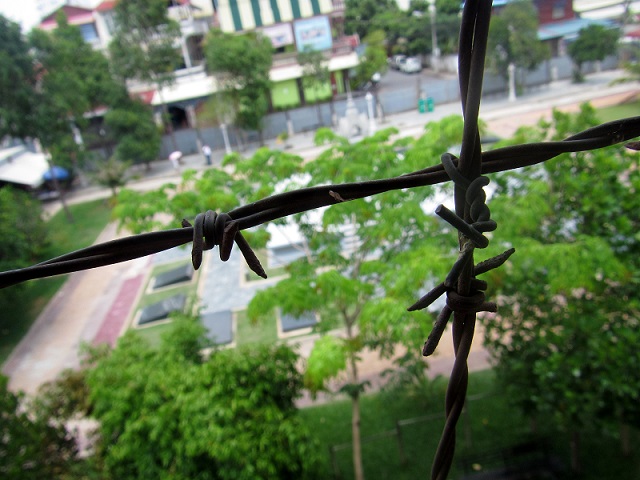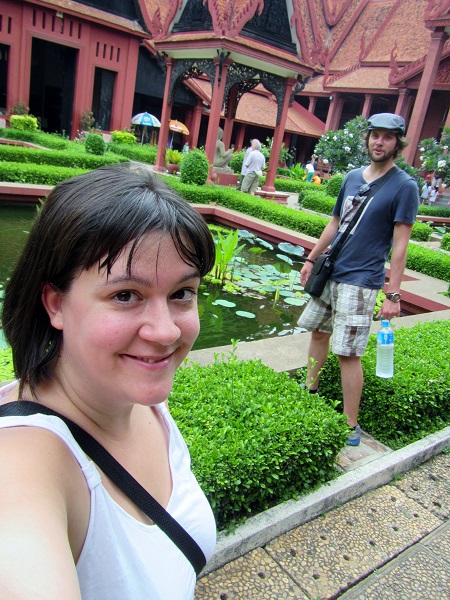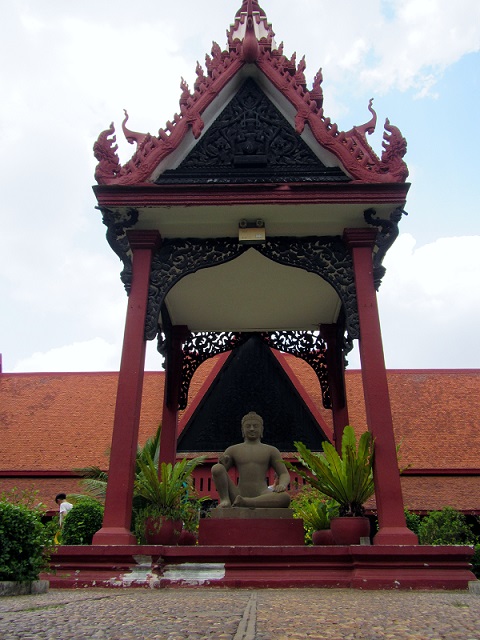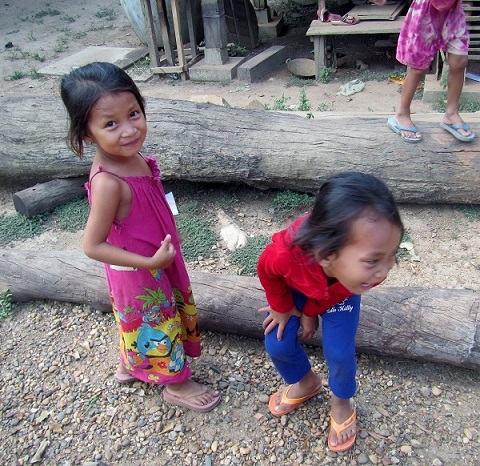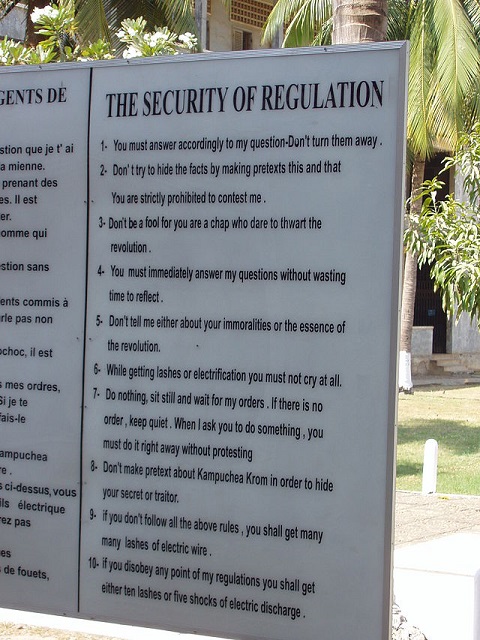We opted for a change of scenery today, and have settled in at Cafe Void for the evening, a small coffee shop in Zhong Tian Hua Yuan. The rainy season has begun in Guiyang, and although the temperature is much better now, we are getting several thunder storms a week. A fairly severe one hit while we were having supper tonight at our favorite hot pot place (it’s never too hot for hot pot!!) when it started thundering. Starbucks is about 20 minutes away by scooter, so we chose to stay close to home instead. Void’s got a great atmosphere anyway, and it’s nice to switch it up now and then anyway 🙂
Now, I know I never got around to finishing all of my posts about Thailand, but I think they’re just going to have to wait. I wrote about most of the major stuff already, and the 2 posts I have left to write (1 on the elephants at ENP and one about nightlife in Thailand) can wait until I’m done with our latest trip: Cambodia!!
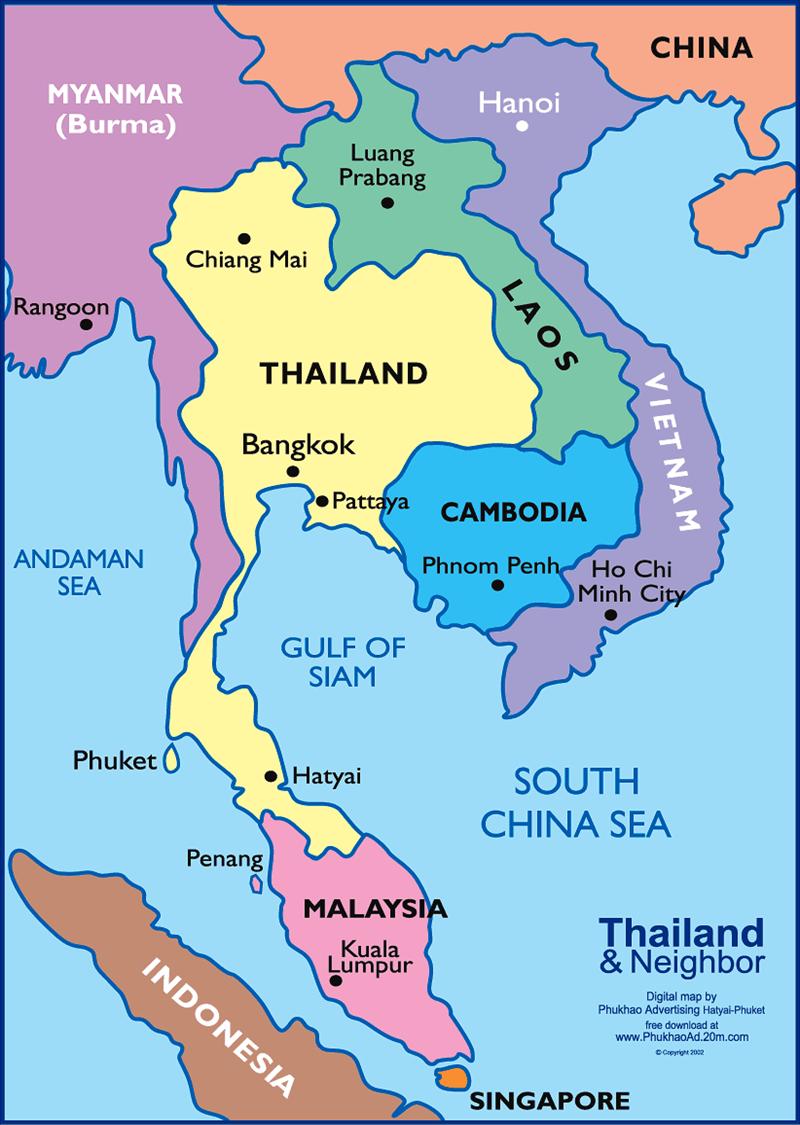
Cambodia is amazing for a variety of reasons. For one thing, it’s incredible exotic…even for people living in China. Unlike Thailand, which is basically Canada’s ‘Caribbean’, Cambodia hasn’t been open for tourism for very long. They have a rather ugly modern history, and until the late 1990s, people simply didn’t go there to visit. But I’ll get to that in a bit…First, I’ll tell you a little bit about our first stop: Cambodia’s capital, Phnom Penh
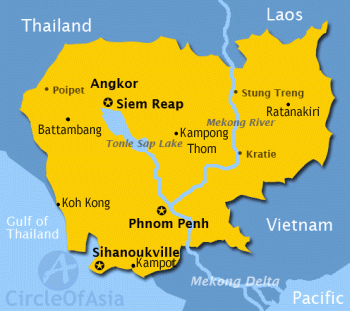
Phnom Penh is a fairly modern city. It isn’t a rich place, but compared to the rest of the country, it has a booming economy. There are plenty of sights to see in Cambodia’s capital, including several markets, monuments and temples and Cambodia’s National Museum. There’s no shortage of places to visit and we had to limit ourselves to a few top choices as we only had 2 days to see the city.
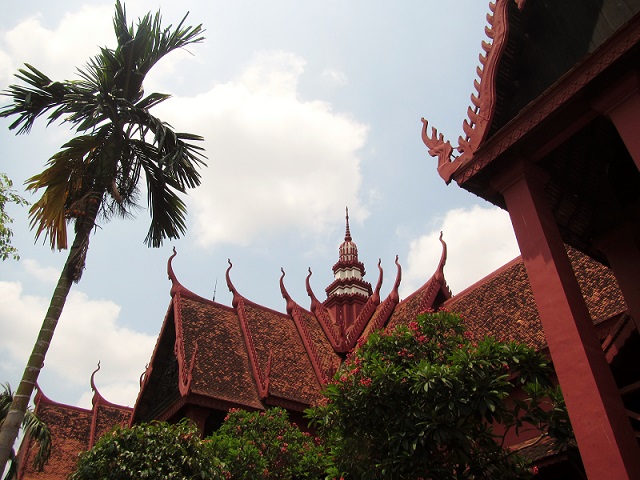
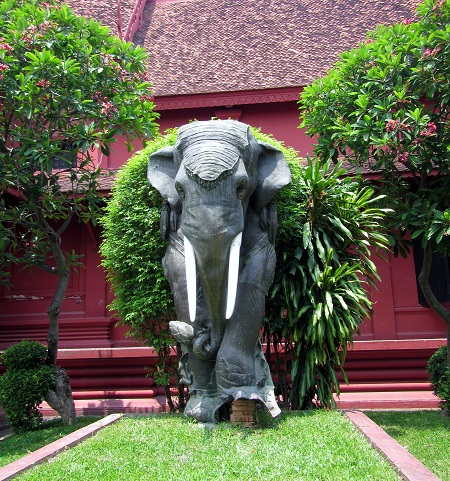
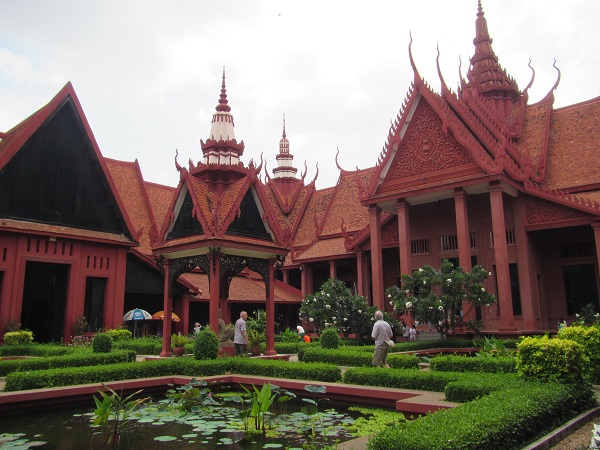
Still, there is extreme poverty here. Many children don’t go to school and instead beg on the street or sell bracelets to tourists. The city is also very dirty, which is common in poor countries.
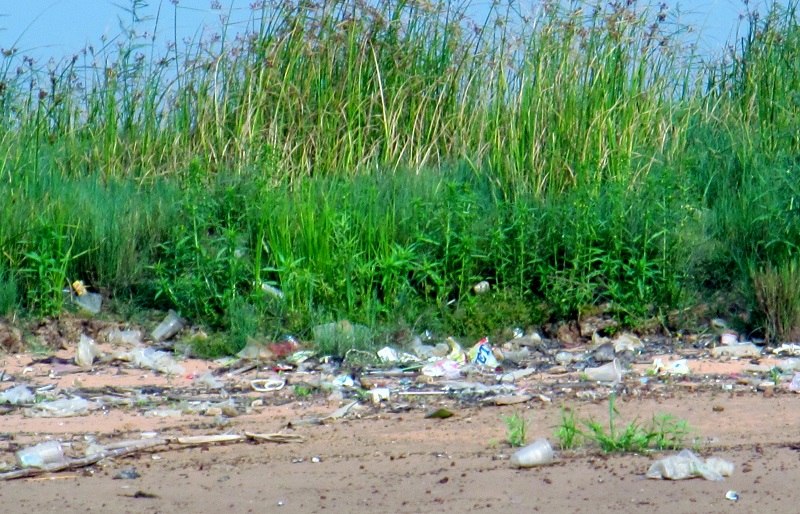
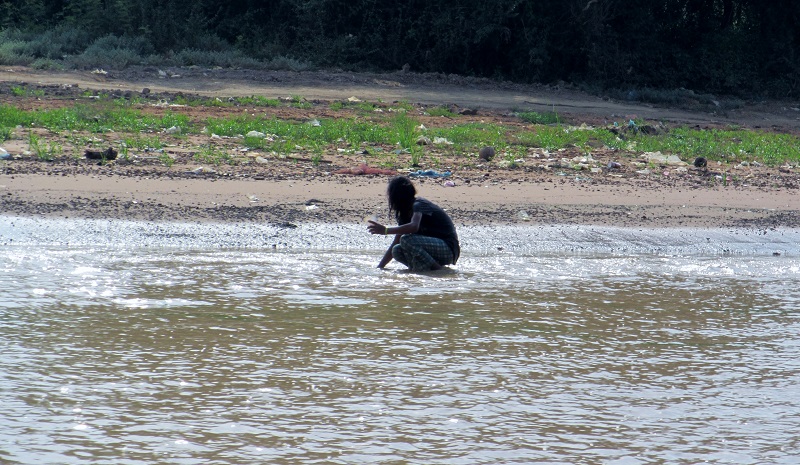
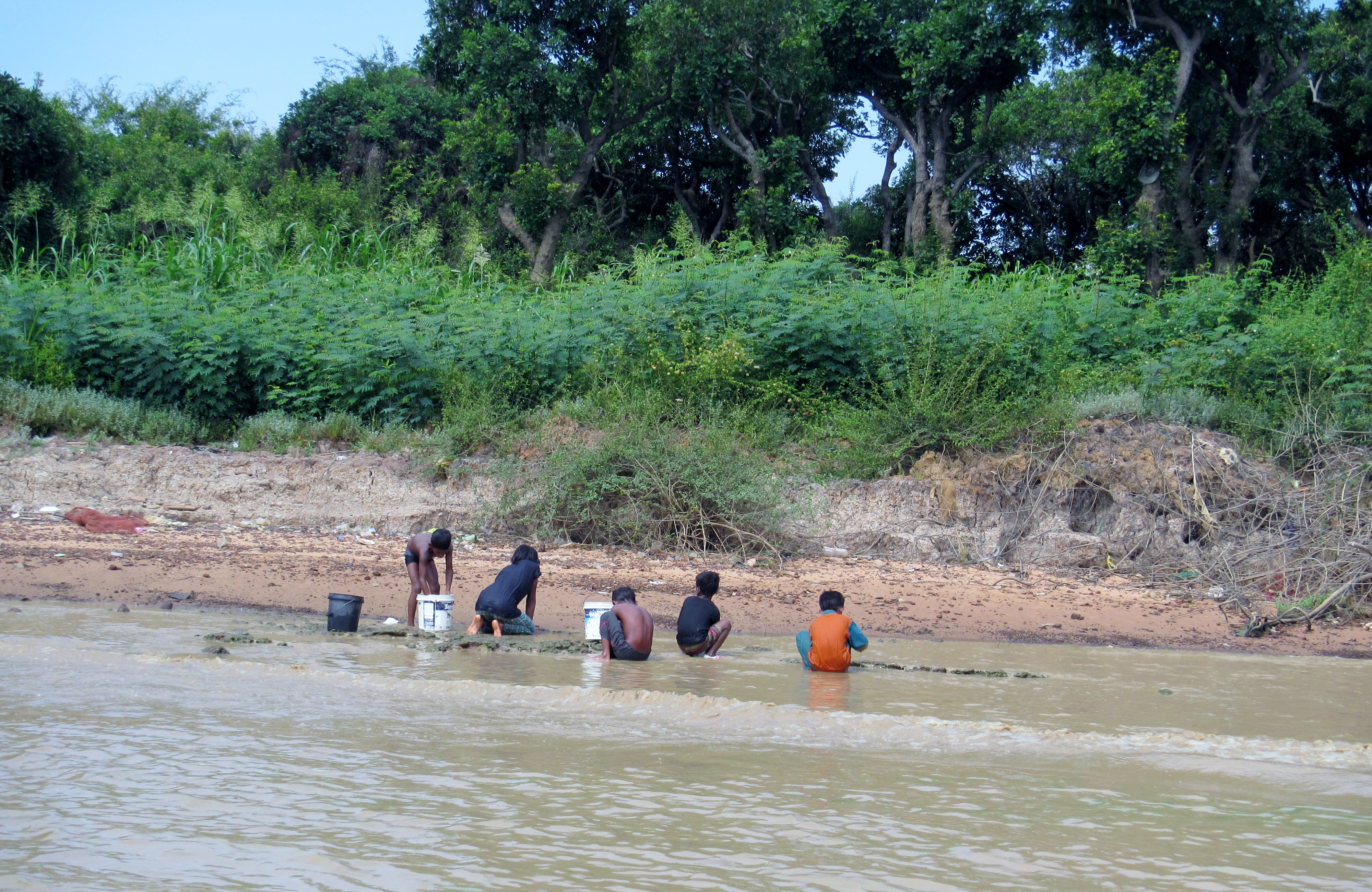
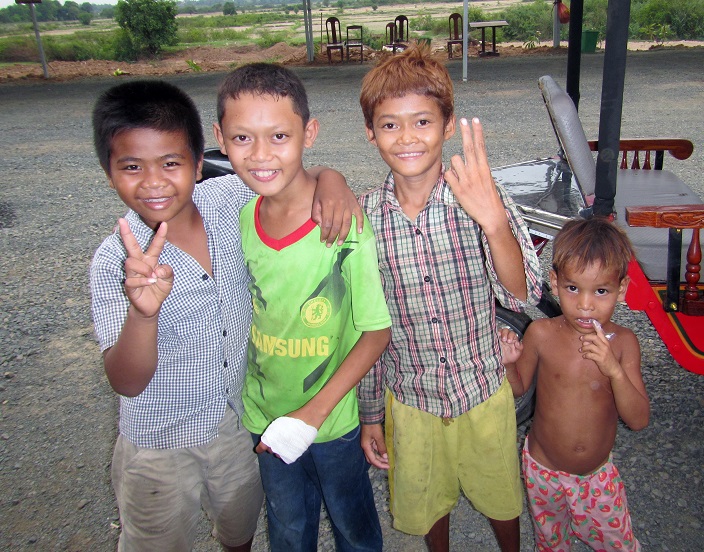
And when it comes to helping the poor in Cambodia, there is a catch 22 for tourists. On one hand, if you don’t buy the things they are selling you feel like a terrible person. $2 isn’t much to a Canadian, but it’s a small fortune for a family as poor as some that we saw. But on the other hand, by giving in and purchasing items from these kids, you are telling their parents ‘yes, sending your children out to sell things is a good idea. I could say no to you, but I can’t say no to them’. I felt awful every time I gave in, but I couldn’t say no, and Dave and I ended up with a lot of bracelets, postcards, books and magnets.
We met these children in Kratie. They were so cute and so shy. I kept making faces at them to make them laugh, trying to get them to come over and say hello (they were hiding behind some boxes trying to get a glimpse of us). I eventually got them to come over and I asked them their names and taught them a little English. When I left, they came running out and said ‘Goodbye, Teacher!!!’. I met another group of girls who were selling flutes. We bought one flute from each of them ($1 a piece…) and I asked them what their names were and how old they all were. They all lit right up when I gave them that little bit of attention. I doubt they have many tourists ask them about their lives. More often than not, they are just shooed to the side.
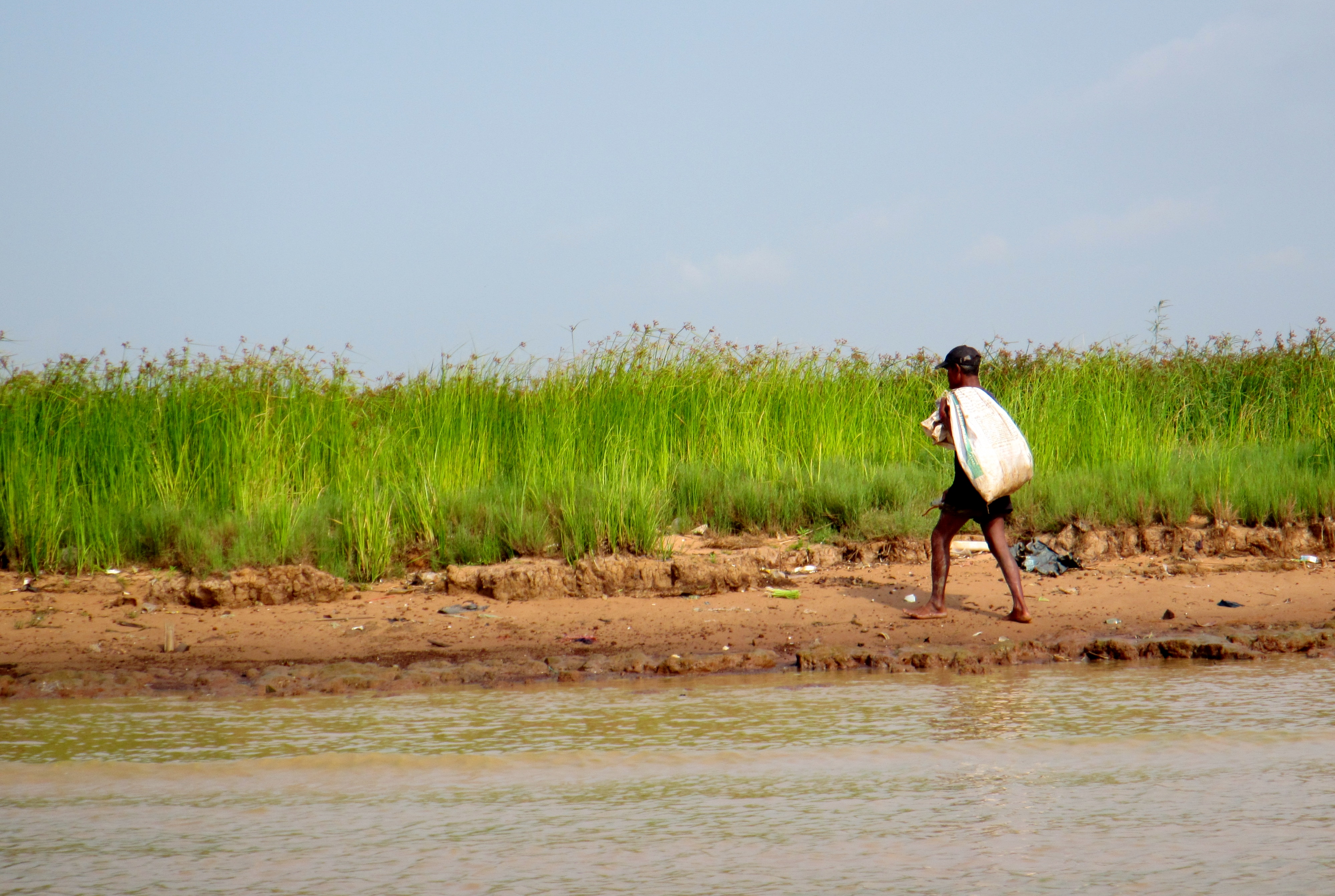
But it wasn’t long ago that children in Cambodia suffered a much worse fate than a lack of education. As I mentioned earlier in this post, Cambodia has an ugly past. From 1975 to 1979, the Khmer Rouge ruled Cambodia, and the people suffered one of the worst genocides in world history. Millions of people died through starvation, torture and execution and this ugly man was the brain behind it all.
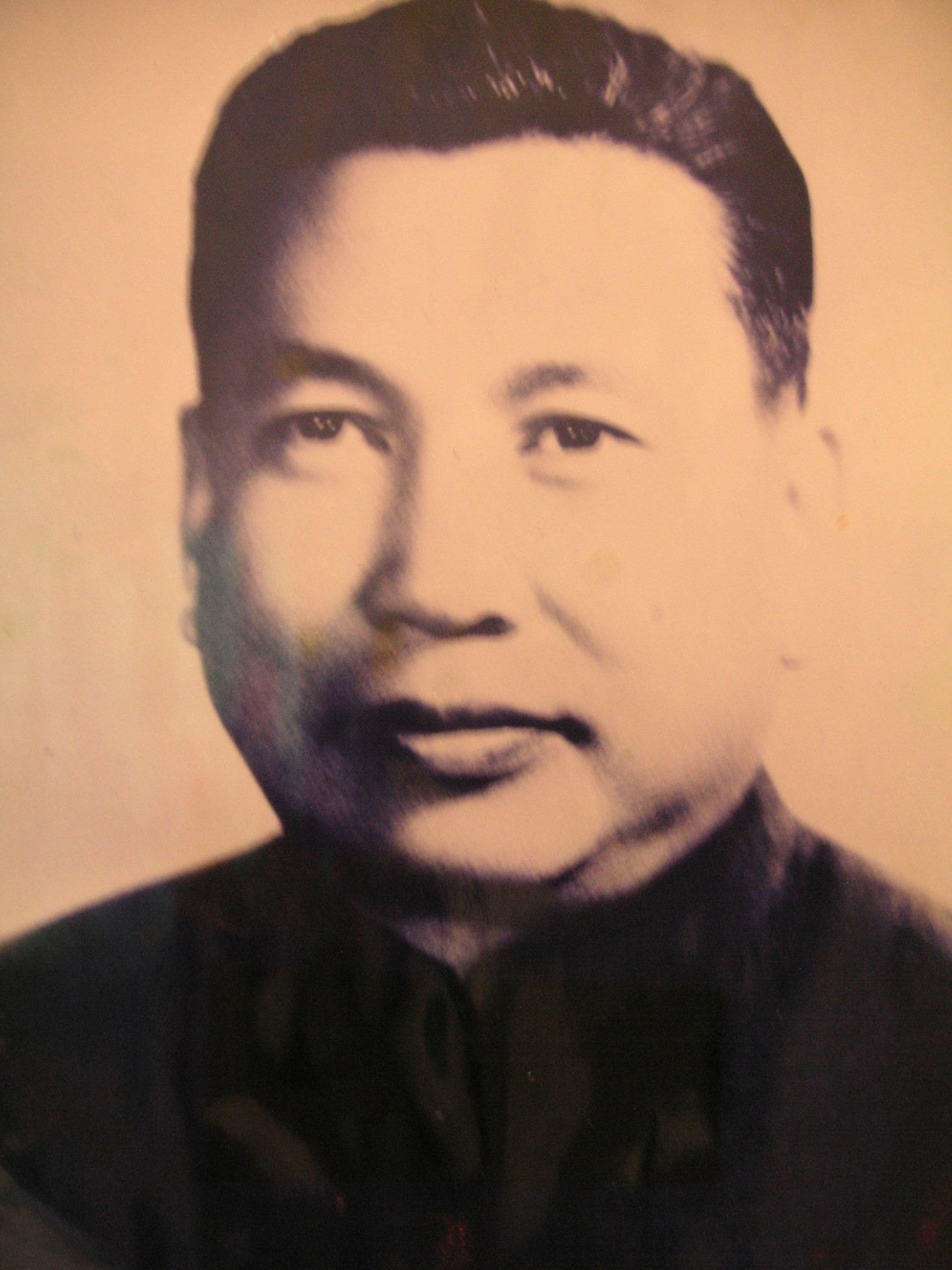
As North Americans, we grow up hearing about Hitler and his atrocities. The Khmer Rouge, however, was completely foreign to me, which is strange given how recently the Cambodian genocide happened. After all, I consider myself to be a worldly minded person…I read the news and keep track of the big things that are happening in the world. But this one I hadn’t heard of. And that’s probably because so little was done by western powers to stop this man. We can’t be proud of bringing down this assailant, like we brought down Hitler, so Cambodia’s story just doesn’t make the cut in our history books.
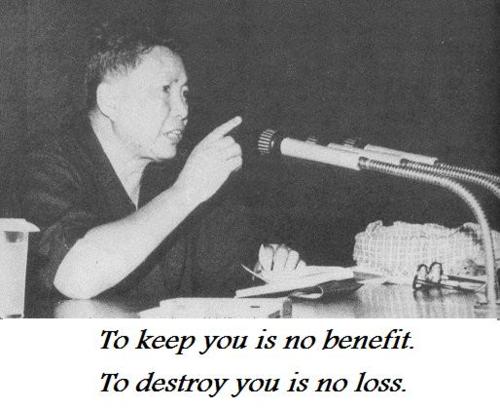
When the the Khmer Rouge took over the country in 1975, Pot had big plans for its citizens. He believed in a perfect communism that was based on agriculture. Pot thought that anyone educated or anyone who lived in the cities was the enemy and he treated them as such. Many of those people were sent to S-21, one of the many schools that the Khmer Rouge turned into torture compounds. We toured the old school and saw some of the things accomplished there in those 4 terrible years.
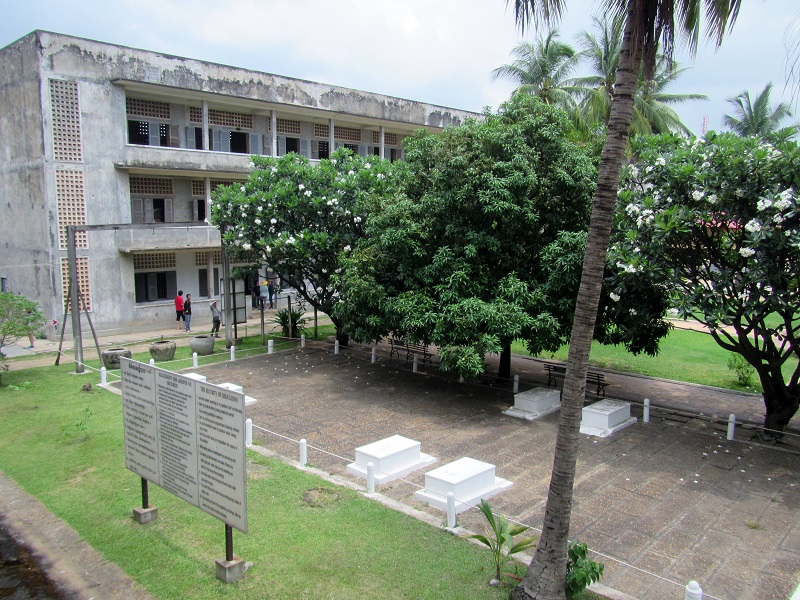
There are several buildings in S-21, each with their own brand of horror. Our first stop was a building where high-status inmates were held. This is where they kept people who were suspected of working with the CIA or other foreign intelligence agencies. It’s said that the Khmer Rouge would arrest anyone who wore glasses, because glasses, after all, are a sign of intelligence. And intelligence was not to be trusted.
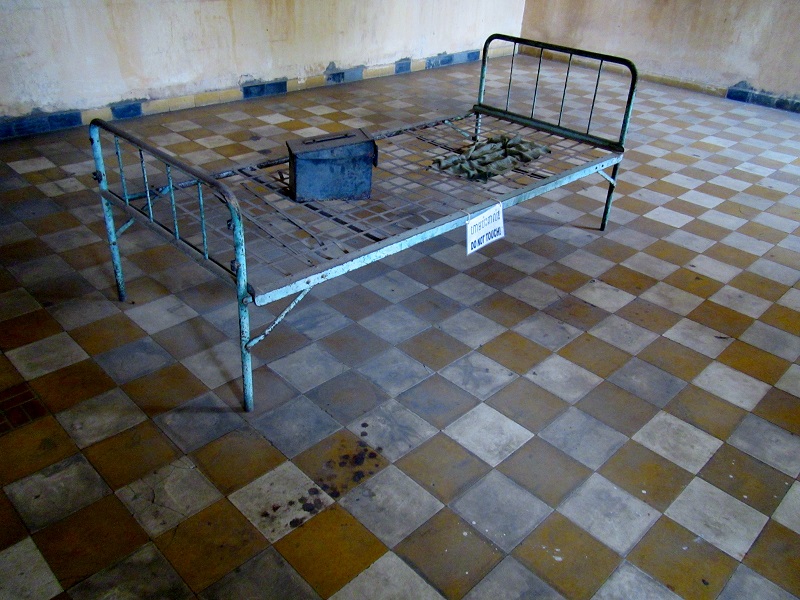
After seeing many rooms like the one above, we moved to another area of the prison where groups of prisoners were kept. The quarters here were far worse…
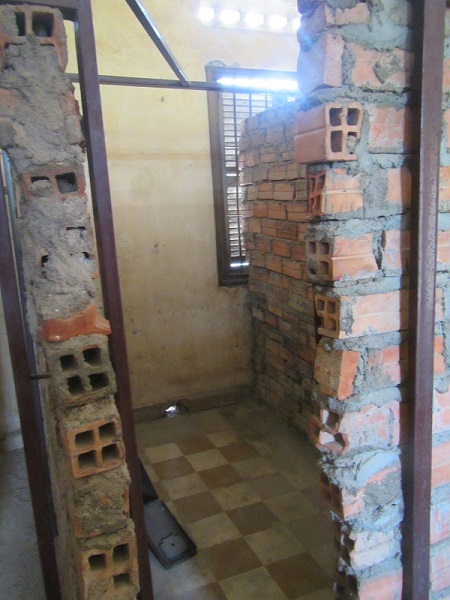
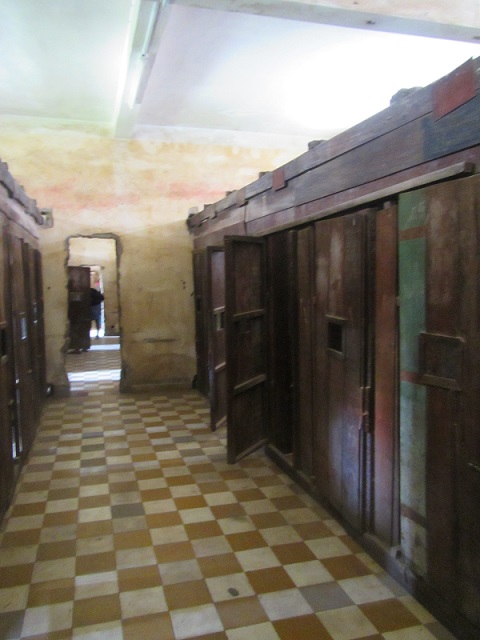
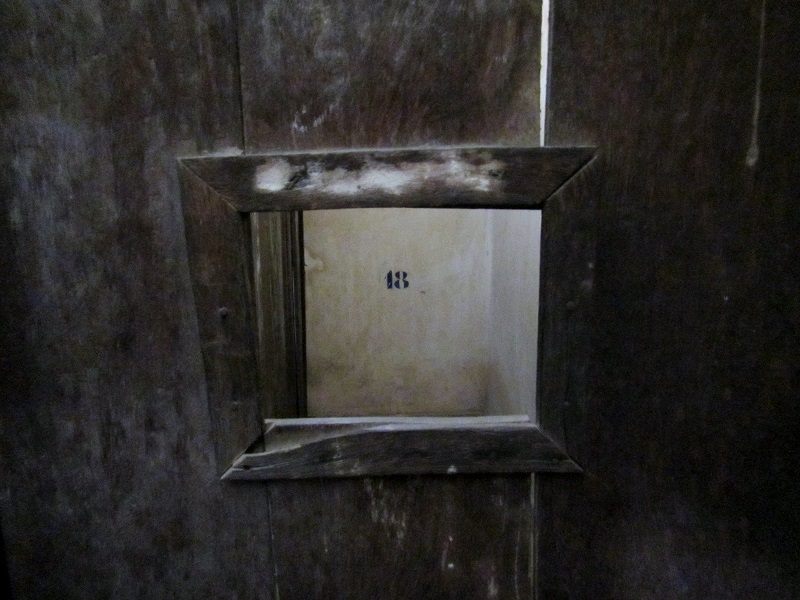
The last building we saw told stories of individuals who survived S-21. In total, it is estimated that 17,000 people were kept here, tortured and beaten. Of those 17,000, only 12 prisoners survived. We met two of them while at S-21 and bought their books. I don’t know if I’ll ever be able to read them. The things we saw here bothered me a lot. I couldn’t sleep for several nights without dreaming about the things I read. The fact that humans could do this other humans is beyond me.
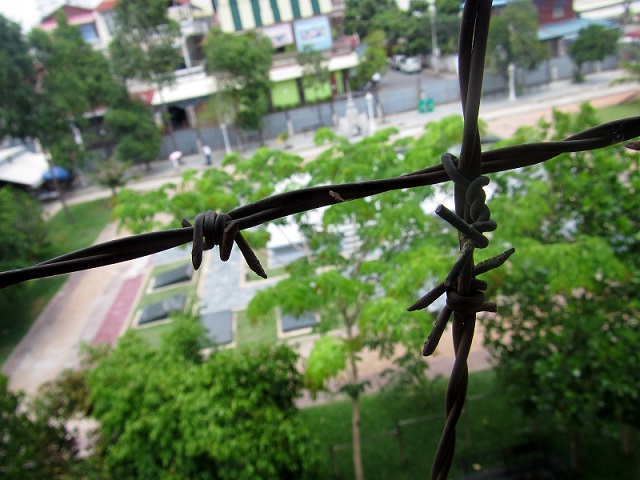
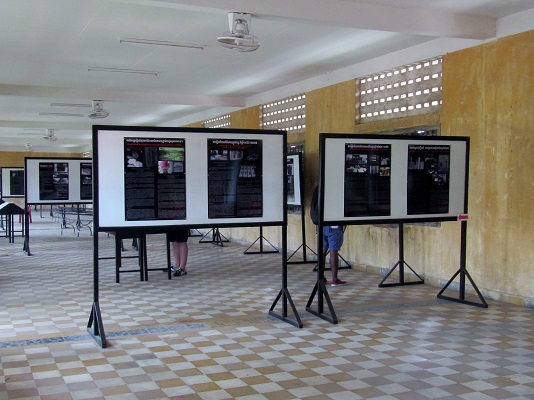
Like any camp of this sort, the inmates had to abide by a list of rules set by the guards. Some of them are impossible for me to understand…
“You must immediately answer my questions without wasting time to reflect.”
“While getting lashes or electrification you must not cry at all.”
No matter how much S-21 bothered me though, The Killing Fields were much, much worse.
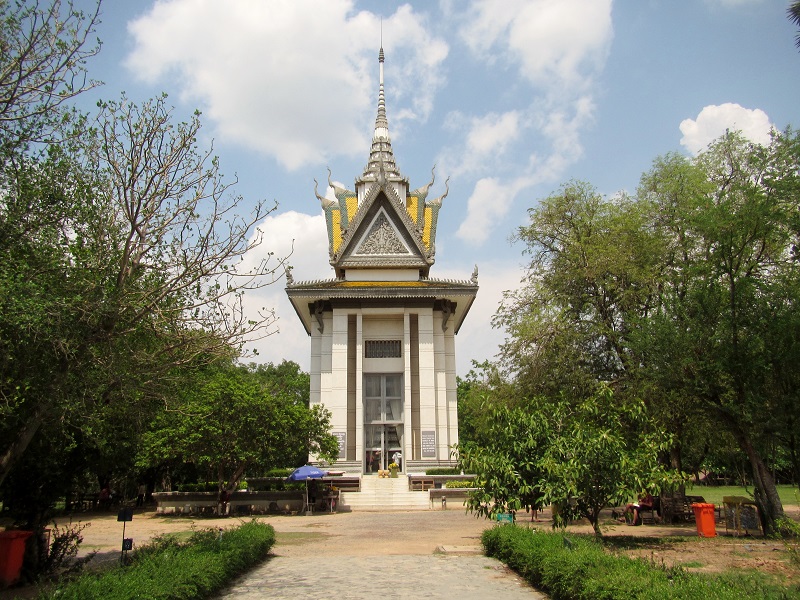
The fields themselves are quite a thing to see. Upon arrival at the Fields, which are just outside Phnom Penh, you are provided with an audio tour (the recordings were very well done and available in many different languages). Everyone has their headphones on and are listening to the stories and history behind the fields. It is completely quiet as you walk through this massacre sight and it feels eerie. If you look up at the other visitors, everyone has the same look on their face. Nobody can quite understand how these things happened. How humans could do this to other humans.
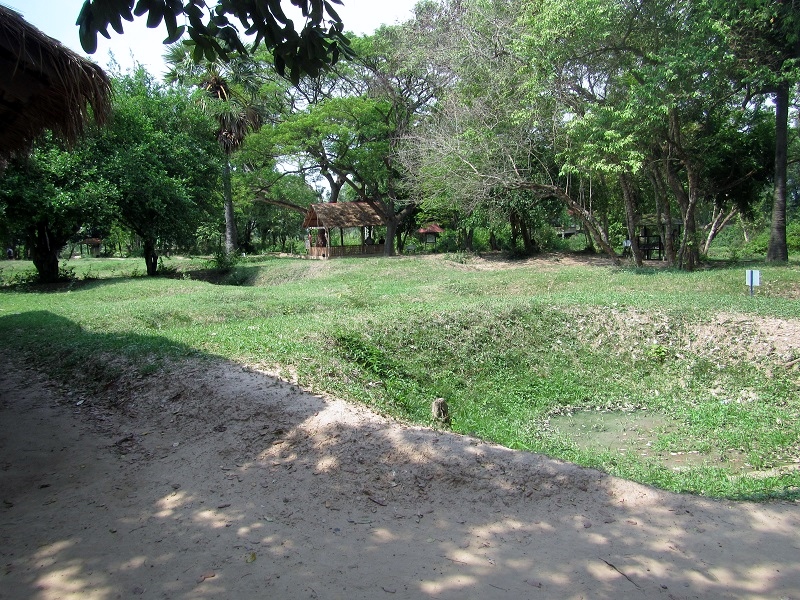
Since the fields were discovered, the individual pits have been carefully excavated, in an attempt to understand what went on in Cambodia under the Khmer Rouge. Many of the larger bones (skulls and femurs) were removed from the earth, cleaned and examined. Some DNA testing was done to help give families closure, though many families have never found their lost relatives. Once DNA analysis was complete, the skulls were moved into the Memorial Stupa that was built at The Killing Fields to honor the dead.
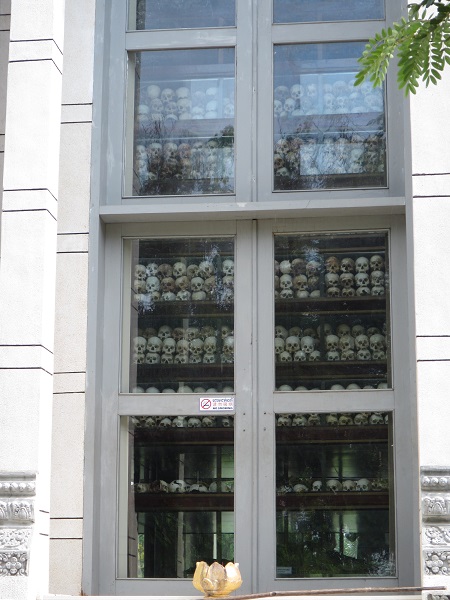
The smaller bones were left in the ground and when it rains heavily, they move up through the soil. As a result, you are often reminded by signage to watch where you are stepping. You can often see bones on the ground as well as the clothing of victims.
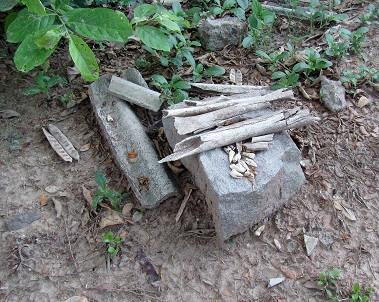
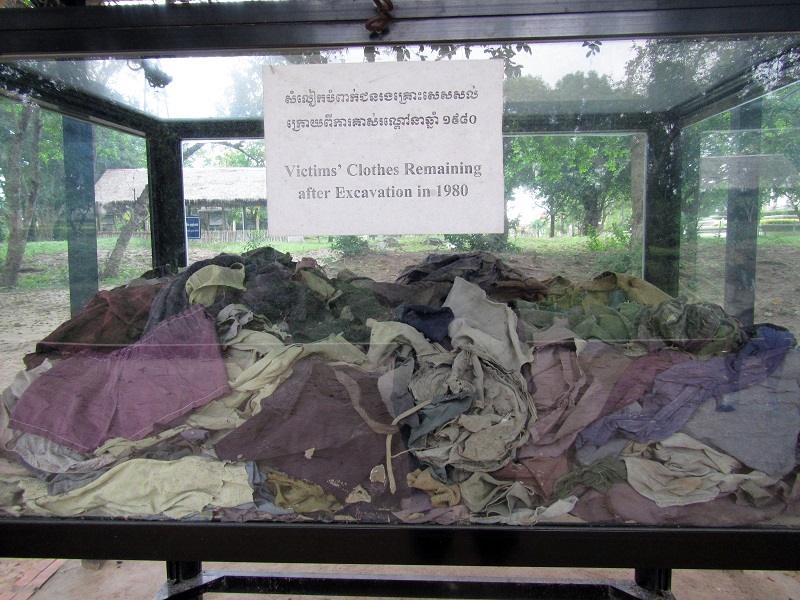
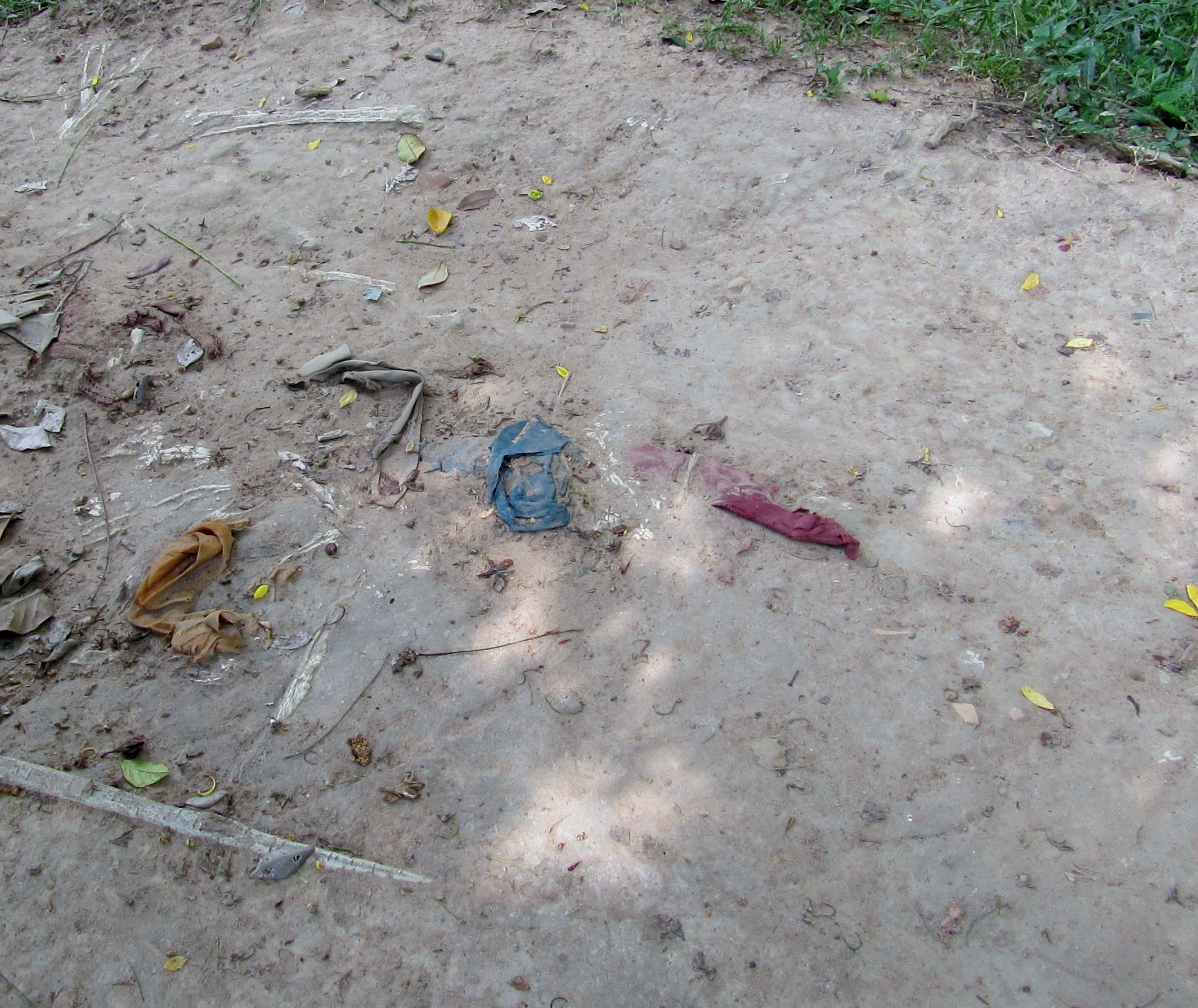
Some of the bigger pits, or pits that were reserved for ‘special’ groups of victims have been sectioned off. On the bamboo posts used to section the pits off, people have left bracelets to commemorate the dead. Many of these bracelets are recognizable from street kids who sell them in down town Phnom Penh.
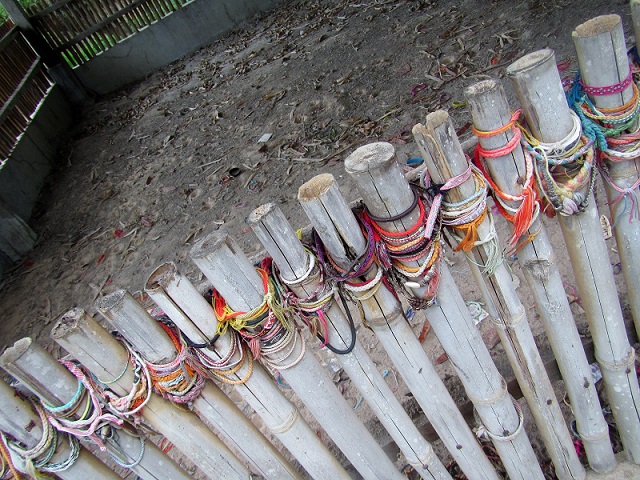
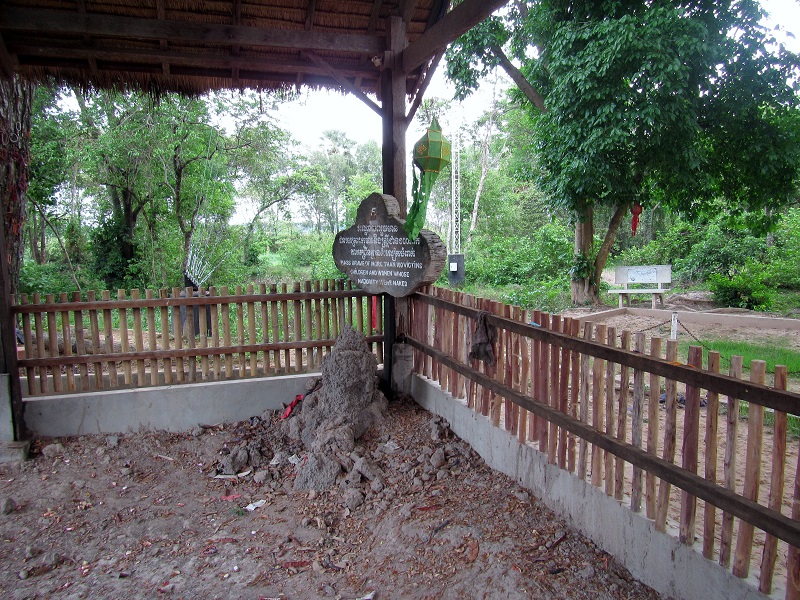
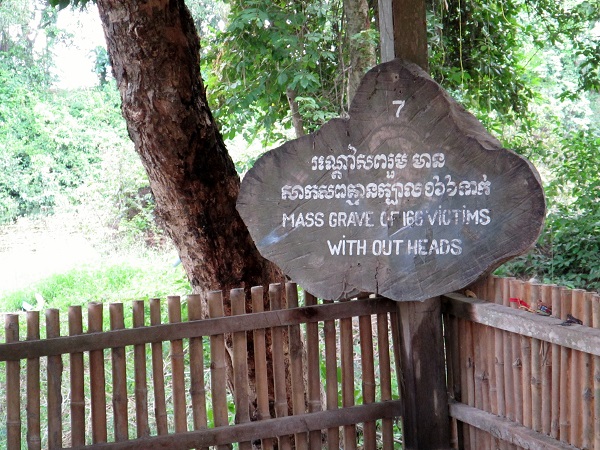
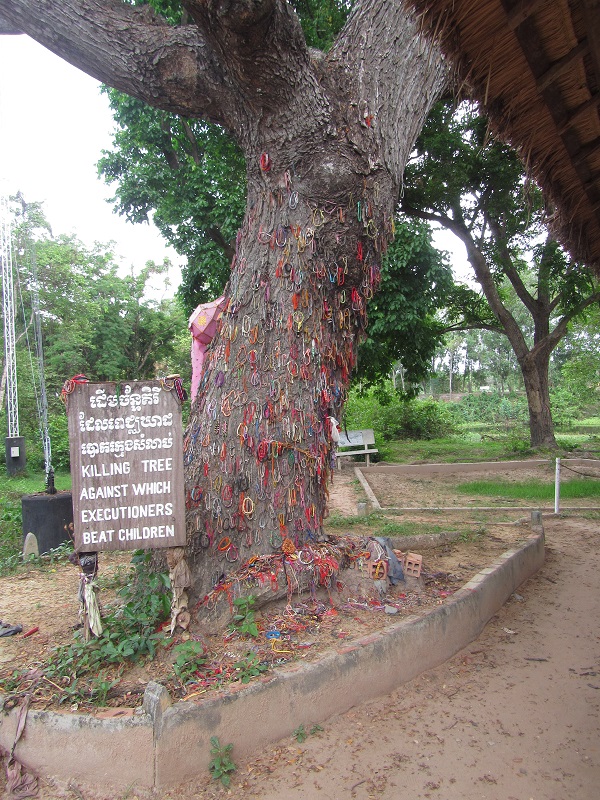
It was difficult walking around these fields. I feel sad and depressed about it even now, as I write this post. Nearly a quarter of Cambodia’s population was killed during the 4 years that Pol Pot was in power. And because this all happened in the last 40 years, everyone you meet in present-day Cambodia has a story they can tell you. They all have either an aunt, an uncle, a grandparent, a parent or a friend who was killed. The trials against the Khmer Rouge’s top officers are ongoing even today, and Pol Pot was never even brought to justice. He died of old age…he spent his final years with his children and grand children: a right he took away from so many innocent people.
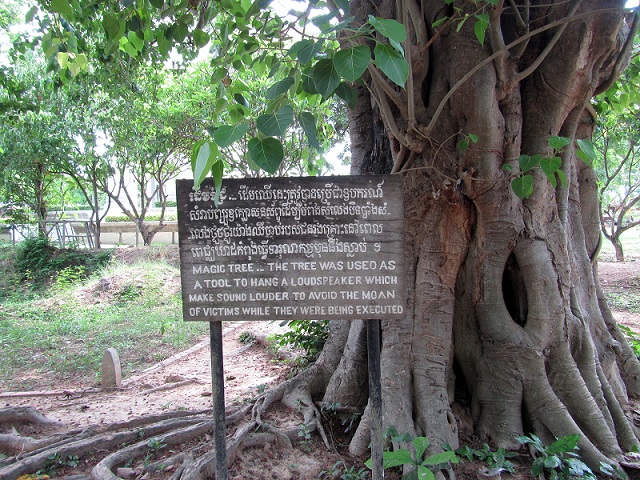
It’s taken me a long time to write this post because of how much it bothers me that these things happened. Visiting Cambodia’s Killing Fields would be similar to visiting Auschwitz or Bergen-Belsen. What happened in Europe in the 1940s is as horrific as what happened in Cambodia in the 70s, but on some levels, Cambodia bothers me more. Not because of the atrocities themselves…but because of my government’s reaction (or lack of reaction) to the Khmer Rouge. Refugees who got out of the country during that awful time were called liars or were accused of exaggerating. Nobody did anything to help the Cambodians…the world didn’t care because Cambodia is so small and far away.
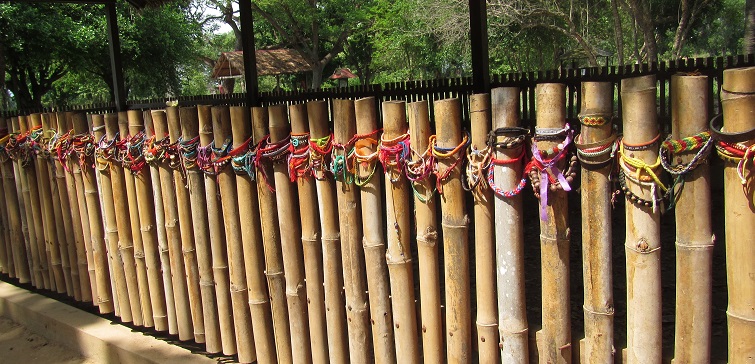
And that’s why, no matter how much I don’t want to think about this stuff…I have to write about it. Through ‘knowing’, we can prevent these types of things from happening in the future. Sure, reading the news can be a bummer, but if you know that your government isn’t taking steps to help people in cases such as this, you can write to your government representative and encourage action. There are petitions to sign and protests to attend. There ARE things you can do to help. Margaret Mead’s words are something to live by:
“Never doubt that a small group of thoughtful, committed citizens can change the world; indeed, it’s the only thing that ever has.”
My next post will be on a lighter topic: Angkor National Park is a UNESCO World Heritage Sight, and boy were there some sights to see!!
